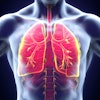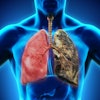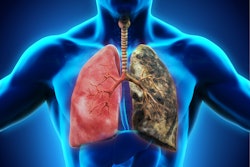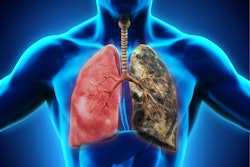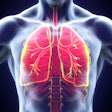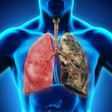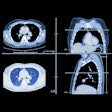Lung cancer screening finds disease in nonsmokers at comparable rates as their smoking peers, researchers have reported.
Although screening for lung cancer mainly targets smokers, an increased incidence of the disease among nonsmokers suggests that guidelines should be expanded, wrote a team led by Caichen Li, MD, of the Guangzhou Institute of Respiratory Disease in China. The findings were published April 21 in JAMA.
"Our study expanded inclusion criteria beyond pre-established risk factors, yielding comparable detection rates," the group noted. "We found that the lung cancer detection rate among individuals classified as not high risk was comparable to that of high-risk individuals, with a higher proportion of stage I cancer detected in the group without high risk."
Low-dose CT (LDCT) is an effective screening tool for individuals at risk of lung cancer, and in the United States, the U.S. Preventive Services Task Force (USPSTF) recommends it annually for individuals 50 and older with a smoking history of 20 pack years. But research has shown an uptick in lung cancer among younger, nonsmoking people, particularly in Asia, Li and colleagues explained.
In China, an initiative called the Guangzhou Lung-Care Project was begun in December 2015 to assess lung cancer detection in the general population. The project continued through July 2021. Its primary outcomes were lung cancer detection rates and proportion of stage I disease. Li's group analyzed data from the project to determine lung cancer rates among people not necessarily at risk.
Among 11,708 participants in the initiative, 1,883 (16.1%) and 4,902 (41.9%) cases were categorized as high-risk and eligible for LDCT screening using National Comprehensive Cancer Network (NCCN) and Chinese consensus criteria, respectively. Out of the total study cohort, 2,245 participants (19.2%) were diagnosed with lung cancer. But of these, only 38 of diagnosed lung cancers met NCCN criteria and only 112 met Chinese consensus.
The investigators found that performance measures among individuals not necessarily at risk of lung cancer were comparable to those among individuals at risk and noted that "[the] study revealed that LDCT has a considerable detection rate of LCs in populations without known high-risk factors."
| Results of LDCT lung cancer screening among various populations | |||||
|---|---|---|---|---|---|
| Measure | High-risk NCCN cohort | Low-risk NCCN cohort | High-risk Chinese consensus cohort | Low-risk Chinese consensus cohort | Nonrisk cohort |
| Lung cancer detection rate | 2% | 1.6% | 2.3% | 1.3% | 1.7% |
| Sensitivity | 90.5% | 98.2% | 94.9% | 98.9% | 96.6% |
| Specificity | 81.9% | 82.3% | 81.5% | 82.7% | 82.2% |
| Positive predictive value | 10.2% | 8.6% | 11.2% | 7.1% | 8.9% |
| Negative predictive value | 99.7% | 100% | 99.8% | 100% | 99.9% |
| Accuracy | 82.1% | 82.5% | 81.8% | 82.9% | 82.5% |
The results underscore a need for more studies "to evaluate efficacy of CT screening and the importance of identifying high-risk factors or prescreen enriching biomarkers in populations not traditionally considered high risk," the authors urged.
The complete study can be found here.

